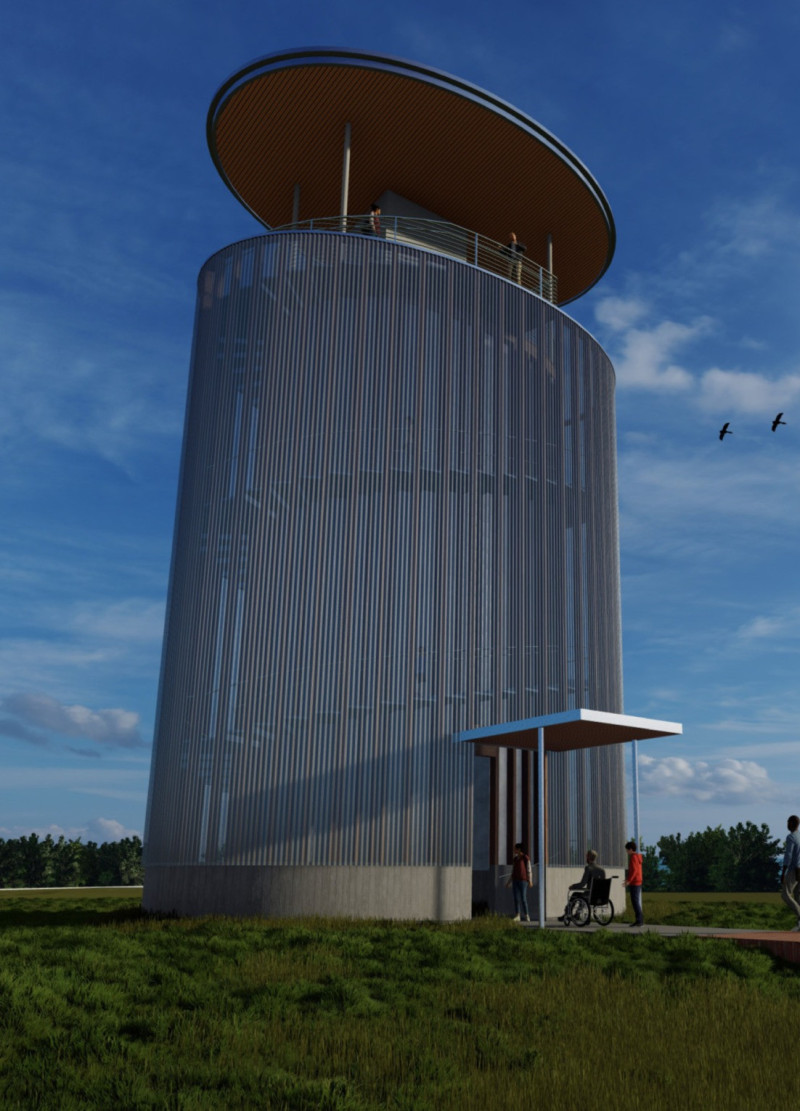5 key facts about this project
At its core, this architecture represents a harmonious dialogue between the built environment and its surroundings. The design embraces principles of sustainability, utilizing green building practices and materials that not only reduce the environmental impact but also enhance the overall living experience. The project's unique approach revolves around the incorporation of natural light and ventilation, facilitating a healthier interior atmosphere. Large windows and strategically placed openings allow for ample natural light to filter through the spaces, reducing the dependence on artificial lighting and creating a welcoming ambiance.
The layout of the project is designed to promote social interaction and community engagement. Open communal spaces are thoughtfully integrated to encourage gatherings, exchanges, and activities among residents and visitors alike. These shared areas are complemented by private zones that offer residents a sense of retreat within the urban context. The design incorporates flexible spaces that can adapt to various functions, accommodating everything from cultural events to everyday interactions.
In terms of materiality, the project showcases a well-considered selection of elements that harmonize with the local environment. The use of reinforced concrete provides a robust structural framework, while large glass panels facilitate transparency, creating a visual connection between indoors and outdoors. Natural wood finishes introduce warmth and texture, enhancing the sensory experience of the space. Additionally, elements such as natural stone paving and green roofs integrate the building into the landscape, reinforcing the design's commitment to sustainability and ecological responsibility.
One of the hallmark features of this design is its innovative stormwater management system. By incorporating permeable surfaces and green roofs, the project effectively captures and utilizes rainwater, mitigating runoff while also creating lush, green spaces for residents to enjoy. This approach not only addresses environmental concerns but also enhances biodiversity within the urban setting.
Furthermore, the architectural design prioritizes accessibility and inclusivity. Thoughtful consideration has been given to ensure that spaces are navigable for people of all abilities. Ramps, elevators, and clear signage work in tandem to create an environment that welcomes everyone, reinforcing the idea that architecture should cater to a diverse population.
Unique design approaches evident in this project include the use of adaptive reuse strategies where elements from the existing site are repurposed into the new development. This connection to the existing context preserves historical elements while adapting them to contemporary use, bringing a sense of continuity to the area.
Exploring the architectural plans and sections of this project reveals further intricacies of its design. The thoughtful placement of vertical circulation—stairs and elevators—ensures that moving between floors is intuitive and efficient. The integration of biophilic design principles, which enhance well-being by connecting people with nature, is evident in the selection of indoor plants and natural materials used throughout the interiors.
In this well-crafted architectural endeavor, the interplay between form and function epitomizes the potential of modern design. It serves not only as a physical structure but as a vibrant community hub, reflecting the aspirations of users and reinforcing the relationship between architecture and its environment. Those interested in delving deeper into the architectural ideas that inform this project are encouraged to explore its detailed presentation, which includes architectural plans and sections. This in-depth examination provides a fuller appreciation of the nuances and thoughtful considerations underlying this distinguished design.


























